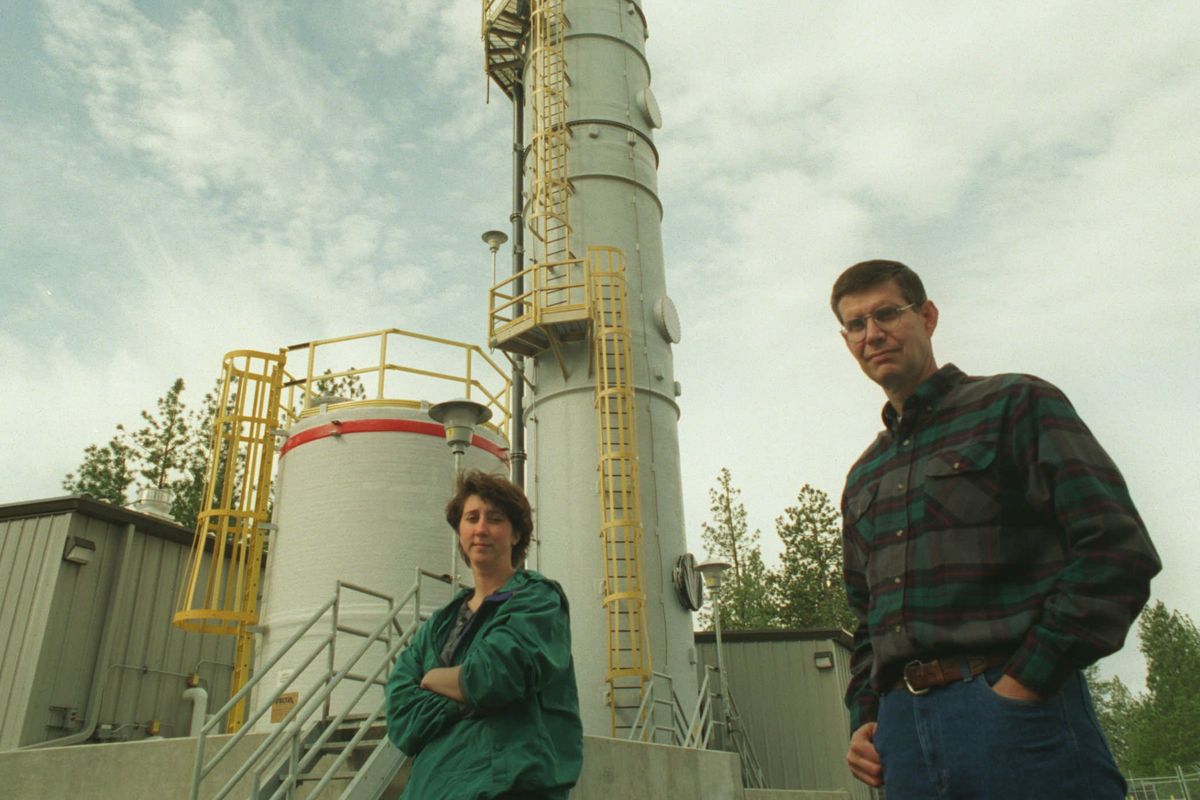40 years ago, Spokane County let businesses pour chemicals on bare ground at the Colbert landfill – the environmental disaster’s still costing the county money

–Forty -five years ago, a Spokane County business could truck its used industrial solvents and degreasers to the Colbert landfill and pour them into an open trench, 55-gallon barrel by 55-gallon barrel.
From 1975 to 1980, Spokane County allowed Keytronic, Fairchild Air Force Base and others to dump thousands of gallons of hazardous chemicals at the landfill. Those chemicals trickled into the groundwater, flowed through aquifers to residential wells and came out of homeowners’ taps.
The Colbert landfill, which operated from 1968 to 1986, became one of the costliest environmental disasters in Spokane County history. The debacle prompted multimillion-dollar lawsuits, a state Supreme Court decision, construction of an elaborate groundwater treatment system and the installation of new water hookups for homeowners. In 1995, The Spokesman-Review reported the cleanup would cost roughly $40 million.
Settlements with insurers, polluter payments and grants defrayed a large chunk of the cost to the county and groundwater quality has improved. But even today, 40-plus years after the pollution happened, the landfill’s costing the county money.
Last month, Spokane County accepted a $41,000 grant from the Washington state Department of Ecology to monitor and predict future migration of 1,4-Dioxane, a suspected carcinogen formerly used in products such as paint strippers, aircraft deicing fluids and shampoos. The grant comes with a 50% cost-share agreement, meaning the county will also have to spend $41,000 to make full use of the money.
Deb Geiger, Spokane County’s regional solid waste manager, explained that the Environmental Protection Agency for years has required the county to monitor groundwater near the Colbert landfill. The landfill remains one of the Environmental Protection Agency’s 11 superfund sites in Spokane County.
“It’s definitely a routine thing,” she said, adding that “this isn’t sampling we would do every single year, this is a more comprehensive round of sampling.”
Geiger explained the grant money will help pay for well water monitoring and future contamination modeling.
Over the past three decades, groundwater tests have shown contamination from the Colbert landfill is on the decline. Part of that is thanks to an expensive water treatment system.
In 1994, the county began pumping groundwater out of extraction wells and running it through a treatment facility.
“It was a pretty neat project,” Geiger said.
Geiger described the facility as an “air stripping tower.” Volatile organic compounds within the water dissipated once exposed to air. The county put the clean water back into the Little Spokane River.
It’s been eight years since the county used the facility. In 2014, the Environmental Protection Agency recommended it be shut down to determine if it was still useful. Geiger said contaminant levels were sufficiently low and the pump and treat system was inefficient.
While the system is on standby and volatile organic compounds aren’t as prevalent in the groundwater, monitoring continues.
“Eventually it’ll sunset,” Geiger said. “We’re out there just making sure the project is going as planned.”